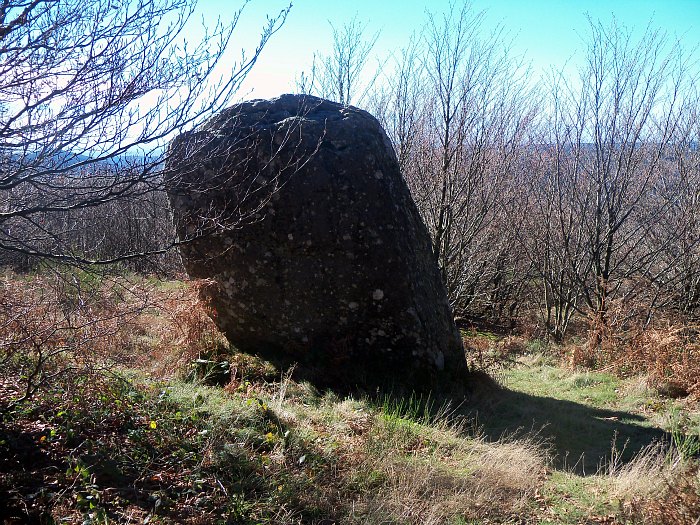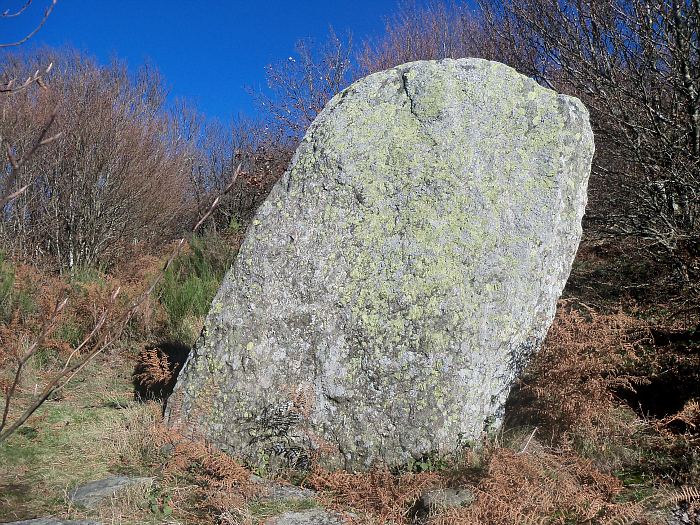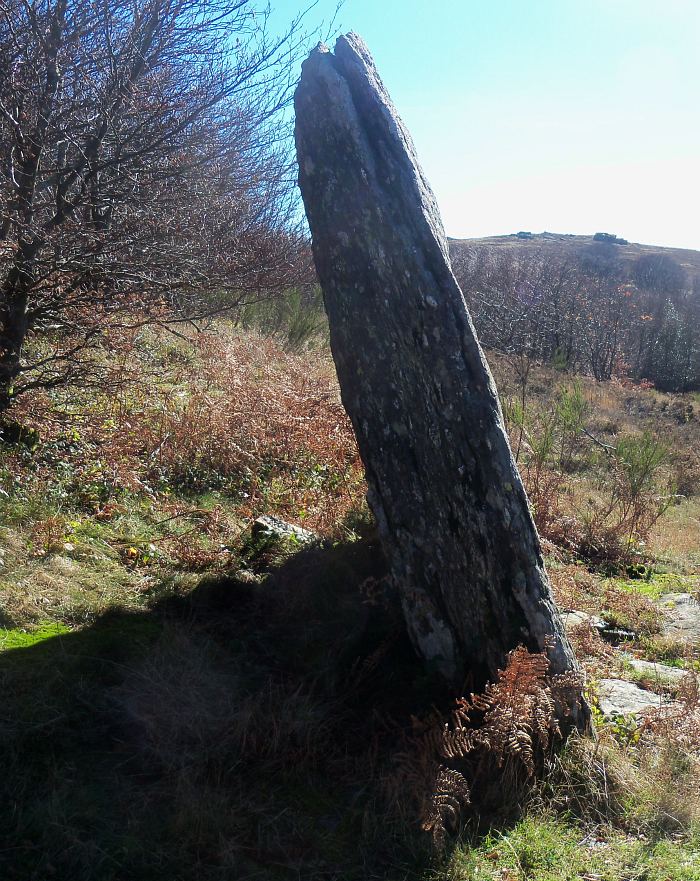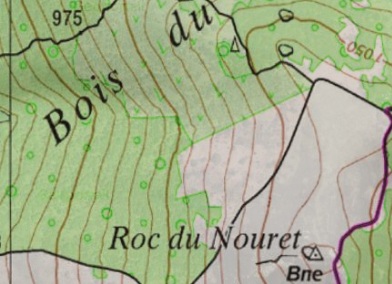Sicard included this standing-stone in his 1919 ‘Essai sur les Monuments Mégalithiques de l’ Aude’. He calls it the Pradelles menhir and reported his visit in the Bullletin of 1904. It is located to the W S-W of le Pic de Nore (alt. 1200 m.) and N N-W of Pradelles village – and not ‘au sud de Pradelles’, as Sicard states.
The immediate area is littered with massive boulders and rock formations:
Sicard, in those very early days of archaeology, was prone to seeing dolmens all over the landscape: ‘Non loin sur une eminence quelques dalles plantées verticalement se font remarquer. Elles ne sont pas bien hautes : elles sembleraient indiquer la place soit de deux tombelles, soit de deux petits dolmens ‘.
The menhir itself cannot be mistaken:
Above, viewed from the east. Below, from the north.
It measures 2 m.60 tall, by 2 m. wide and is roughly 50 cm. thick. It leans to the north and east. Its orientation is E – W.
It is composed of granitic gneiss, like all the neighbouring rocks.
Gneiss is formed by regional metamorphism, in which a sedimentary or igneous rock has been deeply buried and subjected to high temperatures and pressures. Nearly all traces of the original structures (including fossils) and fabric (such as layering and ripple marks) are wiped out as the minerals migrate and recrystallize. The streaks are composed of minerals, like hornblende, that do not occur in sedimentary rocks.
Above, a view from the west.
Sicard’s visit, that August day in 1904, filled his mind with all kinds of possibilities. A group of stones on a nearby ridge could be a stone alignment – a cromlech: ‘à neuf cents mètres environ au sud, sur une hauteur, nommée colline des Nespouliers, s’élèvent encore quelques dalles verticales et tout près un grand nombre de pierres plates, petites dalles posées à plat, alignées toutes dans le même sens et disposées autour d’espaces vides en forme de carrés. Ne pourrait-on voir là, un de ces alignements de nos contrées méridionales, dont parle M. de Mortillet dans son ouvrage le Préhistorique . . . ?’
The menhir is indicated by a Δ near the top.
.








Leave a comment